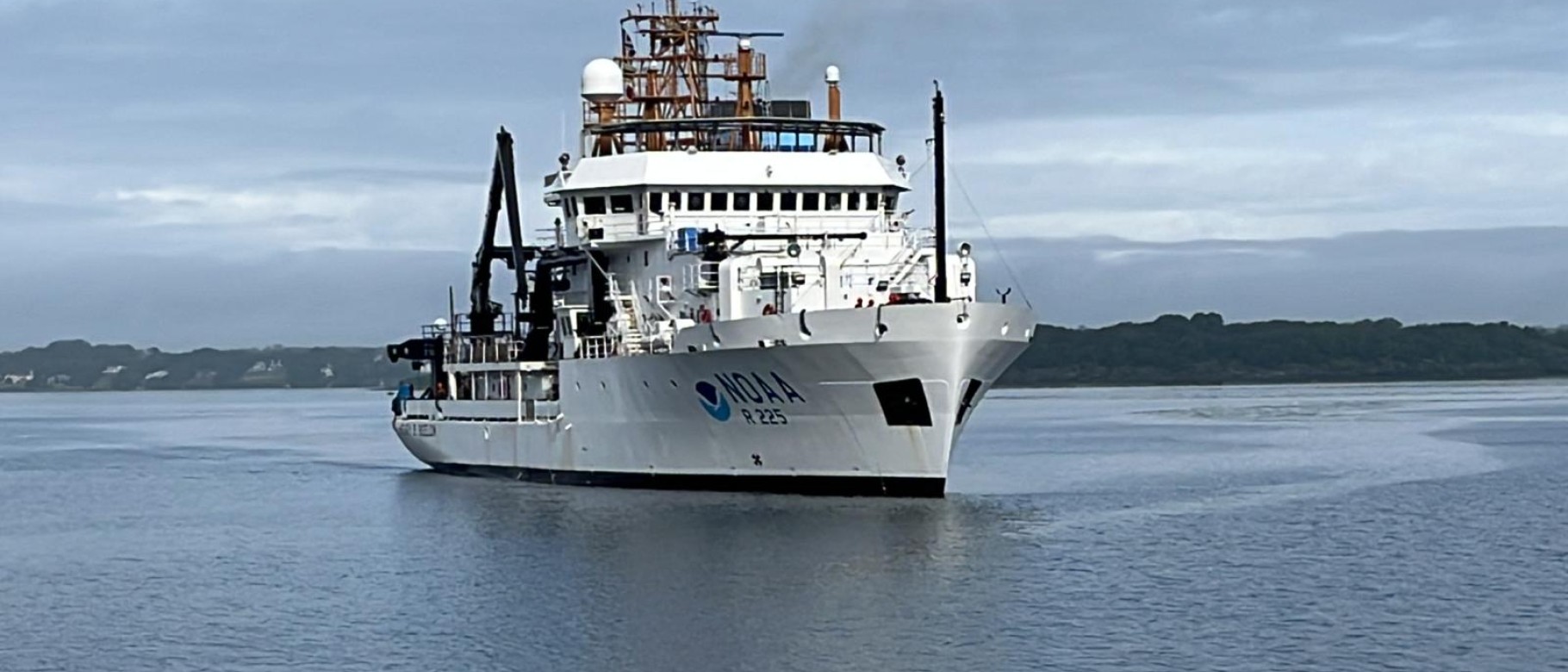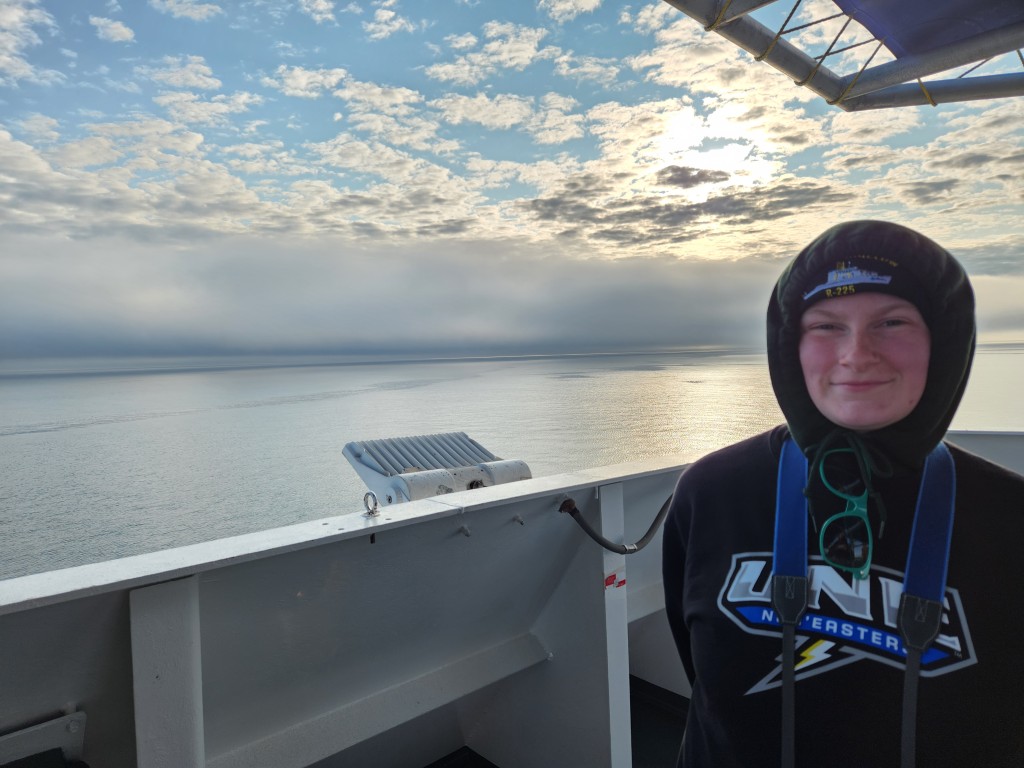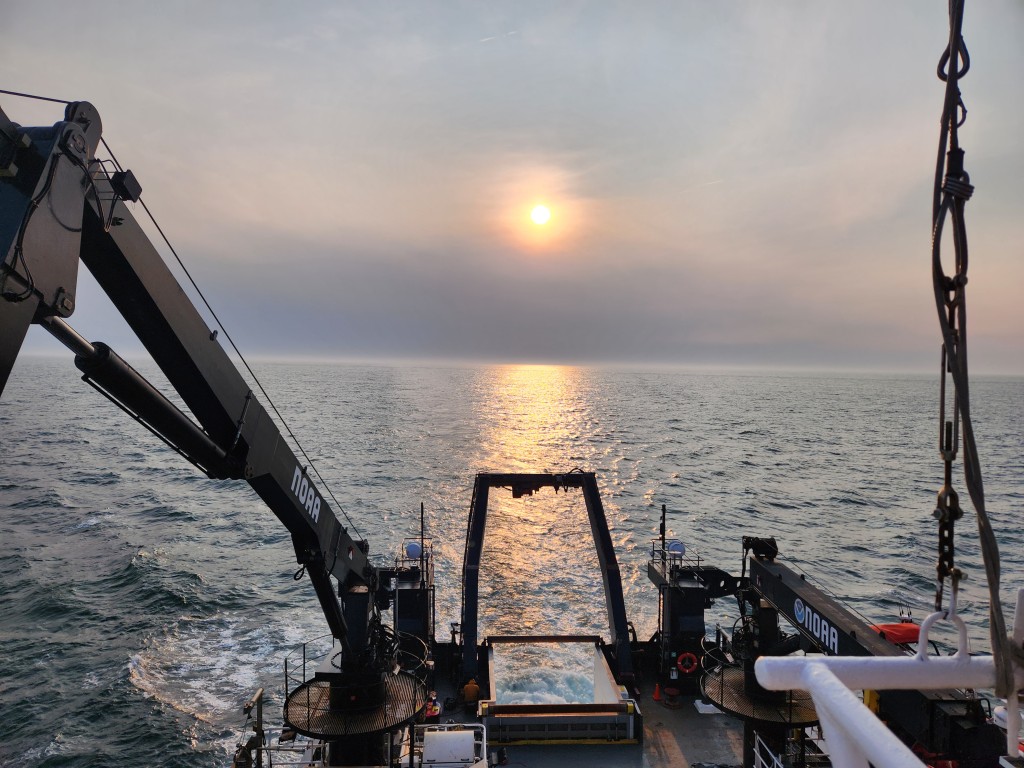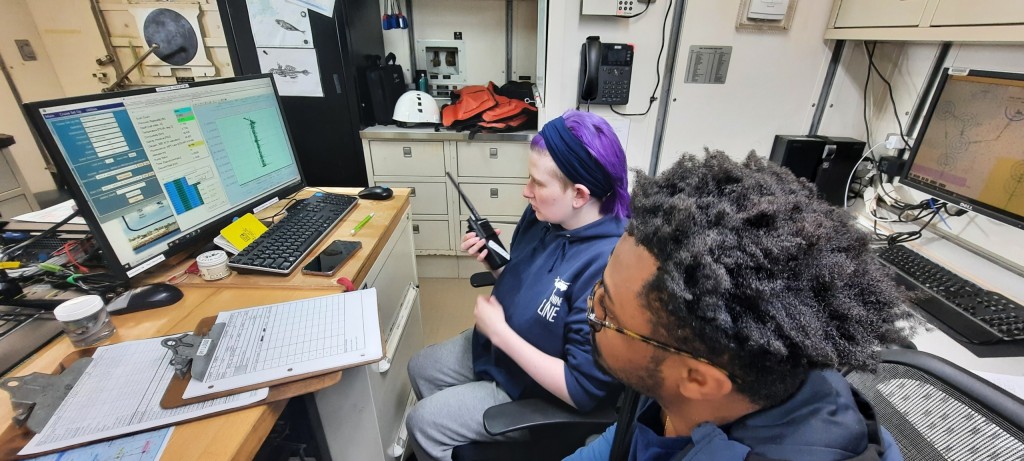Kenzi Kimball ’23 volunteers aboard NOAA research vessel
Marine Science Student Kenzi Kimball ’23 set sail aboard the NOAA research vessel Henry B. Bigelow for a one-of-a-kind volunteer opportunity.

This past June, Kenzi Kimball (Marine Sciences, ’23) volunteered to sail aboard the The National Oceanic and Atmospheric Administration (NOAA) research vessel Henry B. Bigelow to assist Jerry Prezioso, chief scientist for HB2302 Spring Ecosystem Monitoring Survey, with data and plankton sample collections off the northeast coast of the U.S. Over the course of three weeks, Kimball learned to deploy plankton nets and Niskin bottle water samplers; collect and preserve the captured zooplankton; and sample phytoplankton by filtering seawater; launch a couple of drifter buoys which are currently transmitting their positions; and take surface water temperatures on the outer edge of Georges Bank — a large elevated area of the seafloor between Cape Cod, Massachusetts, and Cape Sable Island, Nova Scotia, separating the Gulf of Maine from the Atlantic Ocean.
What made you decide to pursue a major in Marine Sciences?
I decided to pursue Marine Sciences because of an ocean acidification documentary I watched in 7th grade funnily enough! My interest and passion for marine biology has evolved and shifted over the years and I'm so happy I chose this path.
How did you find out about this volunteer opportunity?
I found out about this opportunity through my dad. He was able to make a connection with a NOAA Corps officer on the Navy base in Newport, Rhode Island. After I contacted the NOAA Corps Officer, he gave my CV to the Chief Scientist of the Spring EcoMon (Ecological Monitoring) Cruise on the NOAA ship, Henry B. Bigelow!
What was the most surprising part of the experience?
The most surprising part of the experience for me was the variety of wildlife I saw! I saw Atlantic Puffins, a Brown Booby bird, multiple pods of humpback whales, fin whales, and huge pods of three different species of dolphins.
What was the biggest challenge and how did you address it?
The biggest challenge for me was figuring out how to use the computer program which helped us, as the scientists, know how far down the equipment was going so we didn't hit bottom. It took me a few tries to get comfortable with the program, but it was really satisfying when I was able to run a station all on my own. Once I was ready, I wanted to run every station!
How has your time at UNE prepared you for this opportunity?
UNE has prepared me in many ways for this volunteering experience. Throughout the years here at UNE I’ve learned how to handle and use phytoplankton nets, which we called "bongos'' on board a CTD—Conductivity, Temperature, and Depth— which measures salinity, temperature, pressure, and chlorophyll levels; and Niskin bottles, which are water sampling devices. I was also able to identify some of the animals we were catching in the nets as well!
What was your biggest takeaway?
I have two big takeaways from this opportunity. I really love Marine Biology, and I want to be sailing, or underway, for as long as I can. The joy I felt while being underway was something I had never experienced before. I knew before I went on this adventure that if I made it through 21 straight days at sea, this is what I want to do with the rest of my life. The connections I made, advice I was given, and laughs that were shared really solidified that decision. So, I am hoping to get back underway as soon as possible!
What advice do you have for someone who might be interested in doing something similar?
Do things you're afraid of! I was scared of meeting new people, especially those who have been in the field for a while. However, the experience I had was phenomenal! But, even if a volunteer/internship experience you tried wasn't right for you, there's a million other things you can try. It's important to try these things out now while we are still young so if we don't like something having to do with our career, we can find a different route to explore.
Another piece of advice would be to reach out to people. Making connections is truly the most important thing for any field. If you feel like you don't have any connections, I promise you that you do. Talk to your professors, parents, friends, friends' parents, literally anyone! Asking them will give you a better chance at finding volunteer, internship, or job opportunities that you can try out. Any attempt at making a connection with those in your field of interest is great.


